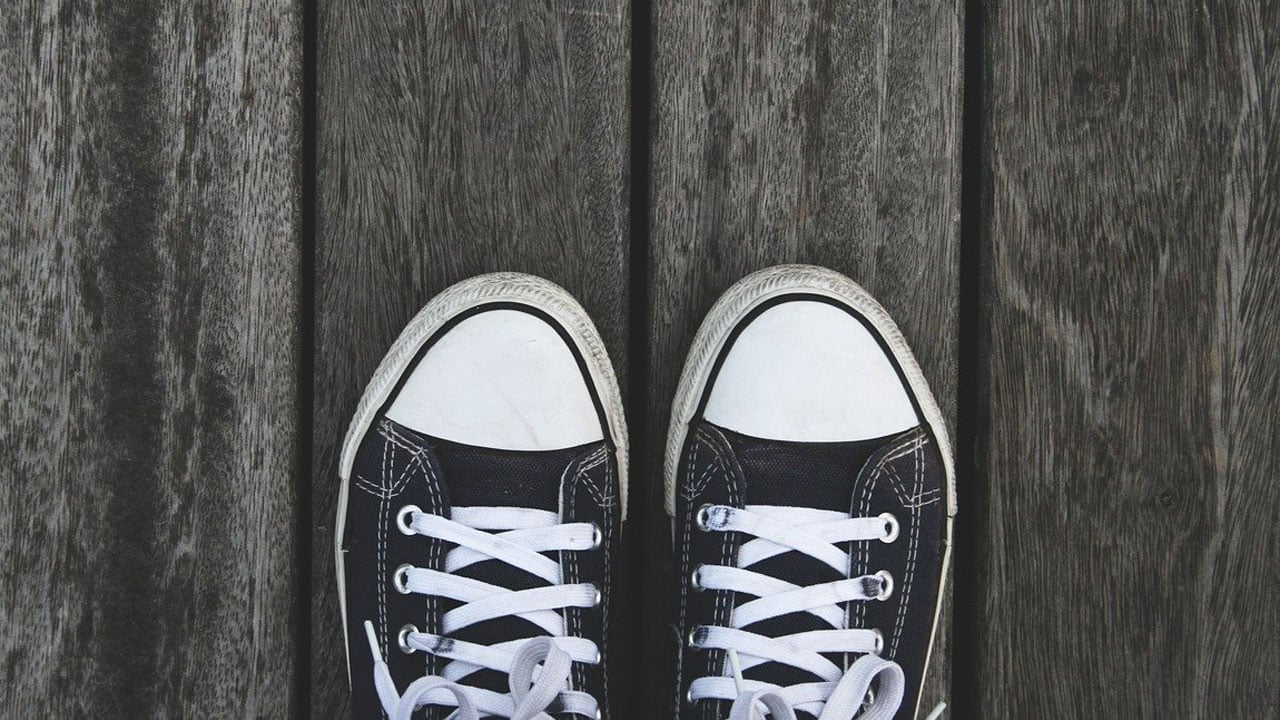Imagine this: you’re walking across your gleaming kitchen floor, a crisp tile surface reflecting the morning sun. All of a sudden, a piercing, obnoxious squeak erupts from your shoes, jarring you back to reality. You’ve probably all experienced the frustrating phenomenon of squeaky shoes on tile floors, but have you ever wondered why it happens?

Image: dragon-upd.com
This seemingly simple sound, a common occurrence in homes, classrooms, and even public spaces, actually has a surprisingly rich scientific explanation. It’s more than just an annoying noise; it’s a fascinating interaction between materials, pressure, and friction. This article delves into the captivating world of squeaky shoes on tile floors, exploring its causes, solutions, and the science behind the sound.
The Dynamics of Friction and Sound
The Role of Friction in Squeaky Shoes
Friction, a fundamental force in physics, plays a crucial role in the squeaking of shoes on tile floors. Friction is the resistance between two surfaces in contact when one or both surfaces move. When you walk on a tile floor, the friction between your shoe sole and the tile determines how easily you can move.
The type of friction involved in squeaking shoes is called “stiction.” Stiction occurs when two surfaces are initially stationary and then suddenly move past one another. This sudden shift in friction causes a quick release of energy, creating vibrations that travel through the air as sound waves – the infamous squeak we hear.
The Science of Sound Generation
The sound of squeaky shoes arises from the rapid vibrations produced when the shoe sole momentarily sticks to the tile and then detaches. The frequency and intensity of these vibrations determine the pitch and loudness of the squeak.
Think of the shoe sole and the tile as two vibrating objects. When the shoe sole moves across the tile, the friction creates a series of tiny vibrations in both surfaces. These vibrations travel through the air to our ears, creating the squeaky sound. The intensity of the vibrations—and thus the loudness of the squeak—depends on the materials, pressure, and the speed of the relative motion.

Image: besthomefixer.com
Factors Influencing Shoe Squeak
Several factors can contribute to the dreaded squeak. Understanding these factors can help you identify the culprit and find potential solutions:
- Material of Shoe Sole: Certain materials, such as rubber, tend to stick to tile floors more easily, creating more friction and thus a stronger squeak. Other materials like leather, which are less prone to sticking, can reduce the squeak.
- Tile Surface: Rougher tile surfaces can create greater friction than smooth surfaces. This is why some tiles, especially those with a textured finish, might be more prone to squeaks.
- Pressure: Greater pressure applied to the shoe sole increases the friction, leading to a louder squeak. Heavier people or those who walk with a heavier gait can experience this more often.
- Environment: The humidity of the air can also play a role. In dry environments, where there is less moisture in the air, the friction between shoe soles and tiles can increase.
- Shoe Condition: The condition of your shoe soles, particularly the wear patterns, can influence friction levels. Worn-out, cracked, or uneven shoe soles can generate more friction and squeaks.
Solving the Shoe Squeak Mystery
Now that you understand the science behind the shoe squeak, you can try several tactics to reduce or eliminate the annoying noise:
Practical Solutions:
- Clean the tiles: Regularly cleaning your tile floors can remove dirt, debris, and any built-up residue that might be contributing to friction.
- Change your shoes: If your old shoes are notorious for squeaking, try switching to a different pair with a different material on the sole or a more worn-out texture. Consider using shoes with soles that offer better grip or more cushioned materials.
- Apply a lubricant: Applying a thin layer of lubricant like silicone spray to the soles of your shoes can reduce friction and minimize squeaking.
- Walk softer: Try walking with a lighter gait and reduced pressure to minimize the friction. This can be a simple yet effective solution.
Expert Advice:
Seek help from professionals like flooring experts. They might suggest solutions specific to your tile type and the cause of the squeak. They could recommend specialized floor cleaners, recommend more appropriate shoes, or even apply different coatings to the tile surface to minimize friction.
Additionally, consider consulting with a shoe technician. They can examine the condition of your shoes and recommend specific solutions such as replacing the soles or applying specialized treatments to reduce friction.
Common FAQs about Squeaky Shoes on Tile Floors
Why do my brand new shoes squeak on tile floors?
New shoes often squeak because the soles have a fresh, smooth surface that can create more friction with tile floors. As shoes age and the soles become worn or textured, the friction tends to decrease.
Are squeaky shoes a sign of poor quality?
Not necessarily. Squeaking can occur with any shoe, regardless of quality, especially on certain types of tile floors. It mainly depends on the interaction between the materials and the friction created.
Should I be concerned about squeaky shoes?
Squeaky shoes are usually a nuisance and not a cause for concern. However, if you notice unusual squeaking that accompanies a change in your walking pattern or a feeling of discomfort, it might be advisable to consult a shoe technician or your doctor to rule out any underlying medical issues.
Why Do Shoes Squeak On Tile Floor
Conclusion:
The squeaky shoes on tile floors phenomenon is not just an annoyance but a fascinating example of the intricate interplay between friction, pressure, and sound. By understanding the science behind it, we can better address this common problem. It’s fascinating how such a simple sound can reveal a complex world of physics and materials science.
Are you ready to stop those annoying squeaks and conquer the tile floor with confidence? Share your experiences and tips in the comments below!





